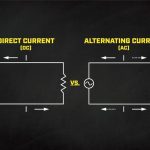Introduction
In the world of electronics, three fundamental components play a crucial role in shaping the behavior of circuits: resistors, capacitors, and inductors. 🧩 Each of these components influences the flow of electrical current in unique ways, enabling devices from smartphones to satellites to function as intended. Understanding their properties and applications is essential for anyone interested in electronics, engineering, or DIY projects. Let’s explore how these essential building blocks shape the world of electronics! ⚡📱🔧
🟠 1. Resistors: Controlling Current Flow
A resistor is a component that resists the flow of electrical current, reducing voltage and controlling the amount of current that passes through a circuit. Resistors are essential for protecting sensitive components from excessive current, which can cause damage or malfunctions.
Key Characteristics:
- ⚡ Resistance (R): Measured in ohms (Ω), resistance determines how much the resistor opposes current.
- 🛑 Function: Limits current, divides voltage, and provides biasing for transistors.
- 🌡️ Power Rating: Determines how much heat a resistor can dissipate without damage, measured in watts (W).
Applications:
- 🔋 Regulating LED brightness to prevent burnout
- 📻 Setting frequency responses in audio equipment
- 💾 Providing stable voltage levels in power supplies
Example:
If you connect an LED directly to a battery, it may draw too much current and burn out. By adding a resistor, you limit the current, ensuring the LED operates safely and efficiently.
🟡 2. Capacitors: Storing and Releasing Energy
A capacitor is a device that stores electrical energy in an electric field and releases it when needed. Unlike resistors, capacitors do not consume energy—they store and release it, acting like tiny rechargeable batteries.
Key Characteristics:
- ⚡ Capacitance (C): Measured in farads (F), capacitance indicates how much charge the capacitor can store.
- 💥 Voltage Rating: The maximum voltage the capacitor can handle without breaking down.
- ⏱️ Charging and Discharging: Capacitors charge and discharge at specific rates, determined by the circuit’s resistance and capacitance (RC time constant).
Applications:
- 📺 Smoothing voltage fluctuations in power supplies (filtering)
- 📞 Coupling and decoupling signals in audio and communication circuits
- ⚡ Providing a burst of energy in camera flashes and electric vehicles
Example:
In a power supply, capacitors smooth out voltage fluctuations, ensuring that devices receive a stable voltage, preventing flickering lights and malfunctioning electronics.
🟢 3. Inductors: Storing Energy in Magnetic Fields
An inductor is a coil of wire that stores energy in a magnetic field when current flows through it. Unlike capacitors, which resist changes in voltage, inductors resist changes in current, making them essential for managing current flow in circuits.
Key Characteristics:
- 🔄 Inductance (L): Measured in henries (H), inductance determines the strength of the magnetic field and how much the inductor resists changes in current.
- 🧲 Magnetic Field: Energy is stored in the magnetic field generated around the coil.
- ⏳ Time-Dependent Behavior: Inductors oppose sudden changes in current, slowing down current flow when first energized.
Applications:
- 📻 Tuning circuits in radios and TVs to select specific frequencies
- ⚡ Filtering high-frequency noise in power supplies (chokes)
- 🔋 Storing energy in transformers and electric motors
Example:
In a radio, inductors work with capacitors to create resonant circuits that select specific radio frequencies, allowing you to tune in to your favorite station.
⚖️ Comparison of Resistors, Capacitors, and Inductors
| Component | Function | Energy Storage | Response to Voltage & Current | Unit of Measurement |
|---|---|---|---|---|
| 🟠 Resistor | Limits current and reduces voltage | Converts electrical energy into heat | Current and voltage are directly proportional | Ohms (Ω) |
| 🟡 Capacitor | Stores and releases electrical energy | Stores energy in an electric field | Resists changes in voltage | Farads (F) |
| 🟢 Inductor | Resists changes in current and stores magnetic energy | Stores energy in a magnetic field | Resists changes in current | Henries (H) |
🔁 How They Work Together in Circuits
Resistors, capacitors, and inductors often work together to create complex electronic functions. For example:
- RC Circuits (Resistor-Capacitor): Used for filtering signals, generating time delays, and smoothing power supply voltages.
- RL Circuits (Resistor-Inductor): Found in power supplies and motor controls to limit current surges and filter noise.
- RLC Circuits (Resistor-Inductor-Capacitor): Used in oscillators, filters, and tuning circuits to select specific frequencies, essential in radios and communication devices.
Example:
In an amplifier, resistors set the correct current levels, capacitors filter unwanted noise, and inductors help maintain a stable power supply, ensuring clear, distortion-free sound.
💾 Real-World Applications
- 📱 Smartphones: Capacitors store energy for quick bursts, resistors limit current to protect delicate components, and inductors stabilize voltage in power circuits.
- 🚗 Electric Vehicles: Capacitors help deliver bursts of energy during acceleration, resistors control motor current, and inductors manage power flow for efficient performance.
- 🛰️ Satellites: Inductors filter electrical noise, capacitors ensure stable voltage levels, and resistors protect sensitive instruments from excessive current.
🔮 The Future of Electronics
As technology advances, the demand for smaller, faster, and more efficient electronic components is driving innovation in resistors, capacitors, and inductors. From ultra-miniature capacitors in smartphones to high-power inductors in electric vehicles, these components continue to shape the future of electronics. Emerging technologies like flexible electronics, quantum computing, and wearable devices rely on these components to function, ensuring their relevance for years to come.
📝 Conclusion
Resistors, capacitors, and inductors are the building blocks of electronics, each playing a unique role in controlling, storing, and managing electrical energy. By understanding how these components work and interact, engineers and hobbyists alike can design circuits that power everything from simple LED flashlights to complex supercomputers. As electronics continue to evolve, these fundamental components will remain at the heart of innovation, shaping the devices that power our modern world. 💡🔋🌍


